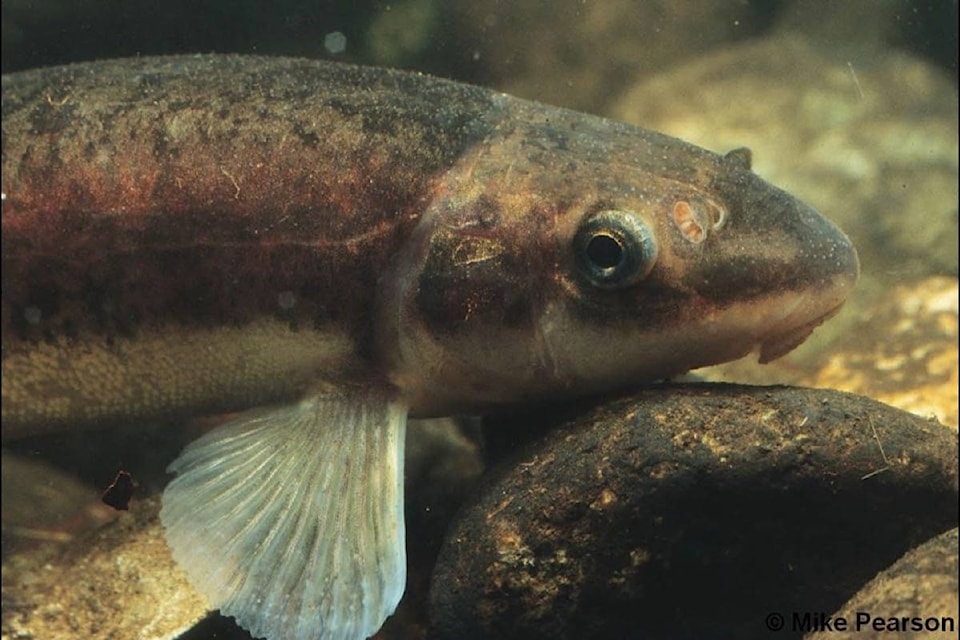An online petition opposing an application for quarry operations off of Hot Springs Road has garnered at least 2,300 signatures – more than the entire Harrison Hot Springs population – and with the support of Tourism Harrison and the Village council behind them, locals continue to voice their discontent with the proposition, citing concerns with the quarry’s impact on tourism, public health and the environment.
The endangered Salish sucker – a semi-dwarf version of the Longnose sucker – swims in only 10 Canadian streams, one of which is the Miami River running through Harrison. While it’s not likely that the small streams running through the property for the proposed mine contain the hand-sized fish, those streams do lead to the river.
Local ecologist Mike Pearson said he would need to actually see the size and strength of the tributaries to determine the impact on the fish.
“They might be in the [streams] in the winter when there’s lots of rain and water levels are high, but those smaller creeks would not support them in the summer,” he said. “They like deeper water.”
A pond on the south side of the site is the type of place suckers would thrive, he said, although he’s never trapped any in that area.
Still, Pearson said sediment residue could have an impact on the sucker.
“Anything that would wash downstream into the habitat would be a concern,” he said.
And sediment is an even bigger concern as we move into spring – spawning season. Suckers eject thousands of tiny white eggs into the water and the eggs’ sticky surface adheres them to gravel on the floor of the creek.
“If there’s sediment getting washed into the creek and carried downstream, it can settle out on the spawning gravels,” said Pearson.
“The gravel needs to be clean. Water needs to be able to flow through it very easily because that’s what carries the oxygen to the eggs.”
“If you get a bunch of sediment and mud on top of [the stream], then either the fish can’t spawn there at all or if it happens after they’ve spawned you can entomb the eggs inside there and they’ll all die.”
Pearson said in a worst case scenario, heavy sediment in the streams could make the water abrasive for the suckers’ gills.
“Fish gills are very delicate, [there’s] just one cell between the blood and the water, so if there’s a lot of grit in the water then that’s a bad thing.”
Pearson said the pint-sized fish is important to the ecology of the rivers it inhabits. As bottom feeders, they take care of dead material on the floor of the stream, keeping waterways clear.
Philosophically, Pearson said the fish has an even deeper meaning to the area.
“They’re found in 10 streams in Canada, all in the Fraser Valley. They are one of the [species] that, biologically, makes this part of the world unique.”
The Miami River is also home to cutthroat trout and coho and chum salmon.
Engagement
The proposed quarry site is small, compared to typical aggregate mines, University of B.C. mining engineering professor Dr. Marcello Viega told the Observer.
With Canada using about 50 tonnes of minerals per person – and aggregate making up the largest portion of that consumption, Viega said the mining has to happen somewhere.
“We are using minerals all the time so somebody has to produce them,” he said. “We need it for everything. For buildings, for roads…”
“But you cannot do anything like this without [leaving] a scar.”
Compared to other operations such as gold mining, the proposed quarry will leave behind less material. Viega said 99.9 per cent of the material mined will likely get used.
“The only thing you leave is a scar or an open pit,” he said. “We have thousands and thousands of this kind of [mine] in Canada.”
WATCH: Residents mobilize to halt quarry development
While Viega said the operation is small, and believes the environmental impact will likely be minimal, he did raise concerns about consultation. Based on his own research, communities often benefit from the creation of a monitoring committee to analyze environmental and social impacts.
“Participation of the public is very important,” he said. “Consultation is not engagement, in my opinion. It is one thing to be regulated, it’s another to be ethically or morally responsible.”
“Engagement is laborious work, but it must be done.”
The public had 30 days from the moment notices were posted in late March to respond with comments and concerns to the Ministry of Energy, Mines and Petroleum Resources. That time frame runs out April 23.
The Ministry can then mandate the applicant to hold a public hearing, or make a decision to pass or deny the application. Other governing bodies such as the Ministry of Transportation and the Agricultural Land Commission will also play a role in the final decision.
